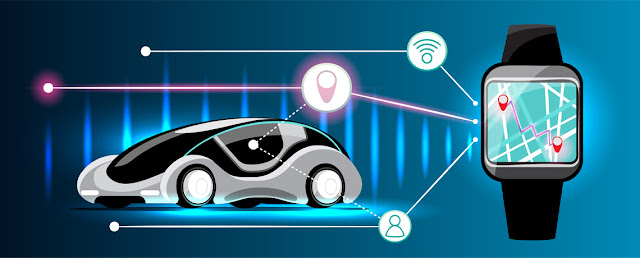Introduction
Technology has become an integral part of our daily lives, influencing how we communicate, work, and even manage our homes. From smartphones to smart appliances, the advancements in technology have made our lives more convenient and efficient. Staying informed about emerging tech trends is essential, as these innovations can significantly enhance our everyday living. This article explores five innovative tech ideas that promise to change your life for the better.
1. Smart Home Automation
1.1 What is Smart Home Automation?
Smart home automation refers to the use of technology to control various devices in your home remotely or automatically. This includes smart speakers, thermostats, lights, and more. These devices can be connected to a central hub, allowing you to manage them through your smartphone or voice commands.
Common Devices
: Smart speakers (like Amazon Echo or Google Home), smart thermostats (like Nest), and smart lights (like Philips Hue).Benefits: Integrating smart home systems can lead to increased convenience, energy savings, and enhanced security.
1.2 Enhancing Security and Convenience
Smart home technology not only makes life easier but also enhances security.
Smart Security Systems: Devices like smart cameras, alarms, and locks allow you to monitor your home from anywhere. You can receive alerts on your phone if something unusual is detected.
Convenience Features: Voice control lets you manage your home with simple commands. Imagine walking into your home and saying, "Turn on the lights," or "Set the thermostat to 72 degrees."
Energy Efficiency: Automated systems can help reduce energy consumption by adjusting settings based on your habits.
1.3 Future Trends in Smart Home Technology
The future of smart home technology looks promising.
Integration with AI: Artificial intelligence will enable smarter decision-making, learning your preferences over time.
Rise of Home Robotics: Robots for cleaning, lawn care, and even cooking are becoming more common.
Predictions for Adoption Rates: As technology becomes more affordable, more households are expected to adopt smart home systems.
2. Wearable Health Technology
2.1 Overview of Wearable Devices
Wearable health technology includes devices like fitness trackers and smartwatches that monitor various health metrics.
Types of Devices: Fitness trackers (like Fitbit) and smartwatches (like Apple Watch).
Key Features: These devices can track physical activity, heart rate, sleep patterns, and more.
Popular Brands: Brands like Garmin, Samsung, and Xiaomi are also making strides in this space.
2.2 Monitoring Health and Wellness
Wearable devices play a crucial role in monitoring health and wellness.
Tracking Activity: They can help you keep track of your daily steps, workouts, and even your heart rate.
Preventive Health Care: By monitoring vital signs, wearables can alert you to potential health issues before they become serious.
Data Privacy Concerns: While these devices collect valuable data, it's essential to understand how your information is used and stored. Many brands are implementing stronger privacy measures.
2.3 The Future of Wearable Health Tech
The future of wearable health technology is bright.
Innovations on the Horizon: Expect advanced sensors that can monitor more health metrics and integration with telehealth services.
Impact on Healthcare Systems: These devices could lead to more personalized healthcare and reduce the burden on healthcare providers.
Market Growth Predictions: As awareness increases, more people are likely to adopt wearable health technology.
3. Virtual Reality (VR) and Augmented Reality (AR)
3.1 Understanding VR and AR Technologies
Virtual Reality (VR) and Augmented Reality (AR) are two technologies that are changing how we experience the world.
Definitions: VR immerses users in a completely virtual environment, while AR overlays digital information onto the real world.
Current Applications: Both technologies are used in gaming, education, and professional training.
Hardware Requirements: VR typically requires a headset, while AR can often be accessed through smartphones or tablets.
3.2 Transforming Learning and Training
VR and AR are revolutionizing education and training.
Immersive Learning: VR can create engaging educational experiences, allowing students to explore historical sites or conduct virtual science experiments.
Professional Training: AR can enhance training by providing real-time information and simulations for skill development.
Case Studies: Companies like Walmart use VR for employee training, resulting in improved performance and retention.
3.3 The Future of VR and AR
The future of VR and AR holds exciting possibilities.
Emerging Trends: Expect to see more social interaction in virtual spaces and innovative entertainment experiences.
Mental Health Therapy: VR is being explored as a tool for therapy, helping individuals confront fears or practice mindfulness.
Market Growth Predictions: As technology advances, the market for VR and AR is expected to expand significantly.
4. Electric and Autonomous Vehicles
4.1 The Rise of Electric Vehicles (EVs)
Electric vehicles are becoming increasingly popular as technology improves.
Overview of EV Technology: EVs use electric motors powered by batteries, offering a cleaner alternative to traditional gasoline vehicles.
Environmental Benefits: They produce zero tailpipe emissions, contributing to reduced air pollution.
Key Players: Companies like Tesla, Nissan, and Ford are leading the charge in the EV market.
4.2 Understanding Autonomous Driving
Autonomous vehicles are at the forefront of transportation innovation.
Levels of Automation: There are different levels of vehicle automation, from basic driver assistance to fully autonomous driving.
Current State: While some vehicles offer advanced features, fully autonomous cars are still in development.
Safety Considerations: Ensuring the safety of autonomous vehicles is a significant challenge, with ongoing discussions about regulations.
4.3 The Future of Transportation
The future of transportation is set to change dramatically.
Adoption Predictions: As technology matures, more consumers are expected to embrace EVs and autonomous vehicles.
Urban Planning Impact: Cities may need to adapt their infrastructure to accommodate these new vehicles.
Changes in Commuting: The way we travel could shift, with more people relying on shared autonomous vehicles.
5. Blockchain Technology Beyond Cryptocurrency
5.1 What is Blockchain?
Blockchain is a technology that allows for secure and transparent record-keeping.
Basic Explanation: It is a decentralized ledger that records transactions across many computers.
Key Features: Blockchain is known for its decentralization, transparency, and security.
Applications Beyond Cryptocurrency: While often associated with Bitcoin, blockchain has many other uses.
5.2 Real-World Applications of Blockchain
Blockchain technology is being applied in various sectors.
Supply Chain Management: It can enhance transparency and traceability in supply chains.
Healthcare: Blockchain can secure patient data, ensuring privacy and accessibility.
Voting Systems: It offers a secure method for verifying identities and votes, potentially increasing trust in elections.
5.3 The Future of Blockchain Technology
The future of blockchain technology is full of potential.
Industry Adoption Predictions: More industries are expected to explore blockchain for its benefits.
Challenges and Limitations: Issues like scalability and energy consumption need to be addressed.
Impact on Various Sectors: Blockchain could revolutionize how we handle data and transactions across many fields.
Conclusion
In this article, we explored five innovative tech ideas: smart home automation, wearable health technology, VR and AR, electric and autonomous vehicles, and blockchain technology. Embracing these advancements can lead to a better quality of life, making our daily routines more efficient and enjoyable. Staying informed and adapting to these technological changes is essential for anyone looking to enhance their everyday living.
FAQs
What are the most accessible smart home devices for beginners?
Smart speakers and smart plugs are great starting points for beginners.
How can wearable health technology improve my fitness routine?
Wearables can track your activity levels, heart rate, and sleep patterns, helping you set and achieve fitness goals.
What are the safety concerns associated with autonomous vehicles?
Concerns include software reliability, cybersecurity, and the potential for accidents.
How does blockchain technology ensure data security?
Blockchain uses cryptographic techniques to secure data, making it difficult to alter or hack.
What are the best practices for integrating VR and AR into education?
Start with clear learning objectives, ensure accessibility, and provide training for educators on how to use the technology effectively.







.jpg)







0 Comments